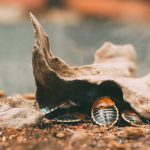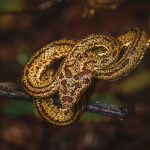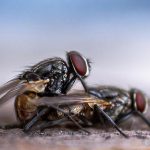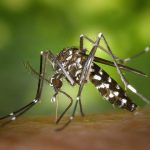Did you know wild pigs in the USA are becoming more common? Their numbers have shot up in recent decades. Feral pigs are not just a rural tale. They bring big problems for the environment and economy.
These pigs adapt well and spread quickly because of human actions. They are found in many climates. And there’s no stopping their growth.
This issue with wild pigs in the USA is not just interesting. It’s a big problem because they have few enemies. They easily adjust to and live in new places. This makes people ask: How did this happen? And what does it mean for us?
Introduction to Wild Pigs in the USA
In the United States, wild pigs are a big problem. They are an invasive species. This means they weren’t here originally, but now they are everywhere. Wild pigs have adapted well and are found across the country.
In recent years, the number of wild boar in the USA has exploded. This has caused problems for the environment and economy. They have survived well because they have no natural enemies. Human actions also play a part in their increasing numbers.
Wild pigs can live in many places, from forests to cities. This makes them hard to control. The situation needs quick action to protect our ecosystems. They damage plant life and compete with other animals for space and food.
It’s important to study how these animals live and where they are found. This info is vital for managing their numbers. The goal is to lessen their impact on the environment.
The History of Wild Pig Populations in America
The tale of wild pigs in America dates back to the 16th century. It all started with European visitors bringing them over. Big names like Christopher Columbus and Hernando de Soto were key in this.
Initial Introductions by Explorers
In 1493, Christopher Columbus took pigs on his second trip to the Americas. He wanted to make sure there was enough food for the new settlers. Then, in 1539, Hernando de Soto brought wild boars from Europe to North America. This was the start of a new chapter for pigs in the area.
Expansion Over the Centuries
The pigs introduced by Columbus and de Soto found a way to thrive in their new home. These early groups quickly grew in number. As more and more pigs were let loose, they spread across different lands.
By the 19th century, wild pigs had become a popular target for hunters. They were now a common sight in North America, thanks to their ability to adapt and multiply freely.
Wild Pig Species Found in the USA
The USA has many wild pig species, all under Sus scrofa. They are part of the Sus scrofa family but are known by different names. These feral pigs have various origins and have adapted differently.
Common Names and Classification
In the USA, wild pigs go by names like feral hog, razorback, and Russian wild boar. Each name describes a different type of Sus scrofa>. For example, feral hogs are once-domestic pigs living in the wild.
Razorbacks are from the southeastern USA. And Russian wild boar have ancestors from Eurasia.
Hybridization with Domestic Pigs
Wild pigs in the USA have mixed with domestic pigs. This has made them stronger and better adapted to different areas. Plus, it’s increased their ability to reproduce and survive.
This mix of traits has helped Sus scrofa do well in many places. That’s why feral hogs, razorbacks, and Russian wild boars can be found all over the country.
| Common Name | Scientific Classification | Region | Characteristics |
|---|---|---|---|
| Feral Hog | Sus scrofa | Nationwide | Domestic pigs reverted to the wild |
| Razorback | Sus scrofa | Southeastern USA | Known for its distinctive spine and toughness |
| Russian Wild Boar | Sus scrofa | Introduced pockets | Eurasian lineage, larger size |
Are there any wild pigs in the USA?
Wild boars are on the rise in the United States. Many people have seen these wild pigs around. This has led to a lot more concern about what they are doing in the country.
Current Population and Distribution
Now, feral pigs have made homes in 35 states. Experts say there might be more than 6 million of them. They can live just about anywhere, from forests to the edges of cities.
Factors Contributing to Their Spread
There are a few reasons why we see more wild pig sightings:
- Human Translocation: People moving them for hunting has helped them spread.
- Adaptability: They can live in different climates and are not picky eaters. This helps them find new homes easily.
- Lack of Predators: With not many natural enemies, wild pigs can grow their numbers fast.
All these reasons are making the wild pig population bigger. It shows how hard it is to control them.
The Environmental Impact of Feral Pigs
Feral pigs greatly affect the environment. They cause ecological damage and cost a lot of money. These animals mess up ecosystems and harm plant and animal life.
Damage to Plant and Animal Life
Feral pigs really hurt plants and animals. They eat crops and native plants, lowering biodiversity. This is bad news for many species.
Economic Costs
The costs of feral pigs are huge for agriculture and property. In the U.S. alone, these costs can reach billions of dollars every year. Farmers and property owners face big challenges fixing the damage.
| Aspect | Impact | Cost Estimate (in billions USD) |
|---|---|---|
| Crop Damage | Destruction of agricultural fields | $1.5 |
| Property Damage | Ravaging of private lands and infrastructures | $0.8 |
| Control Measures | Efforts to manage and reduce populations | $0.6 |
We need to deal with feral pigs’ ecological damage and costs. Managing these animals is crucial to protect our environment and economy.
Where to Find Wild Pigs in the USA
Wild pigs in the USA have found homes in many diverse places. They live in forests, swamps, and mountains across the country. These areas give them food, water, and shelter, helping their populations grow.
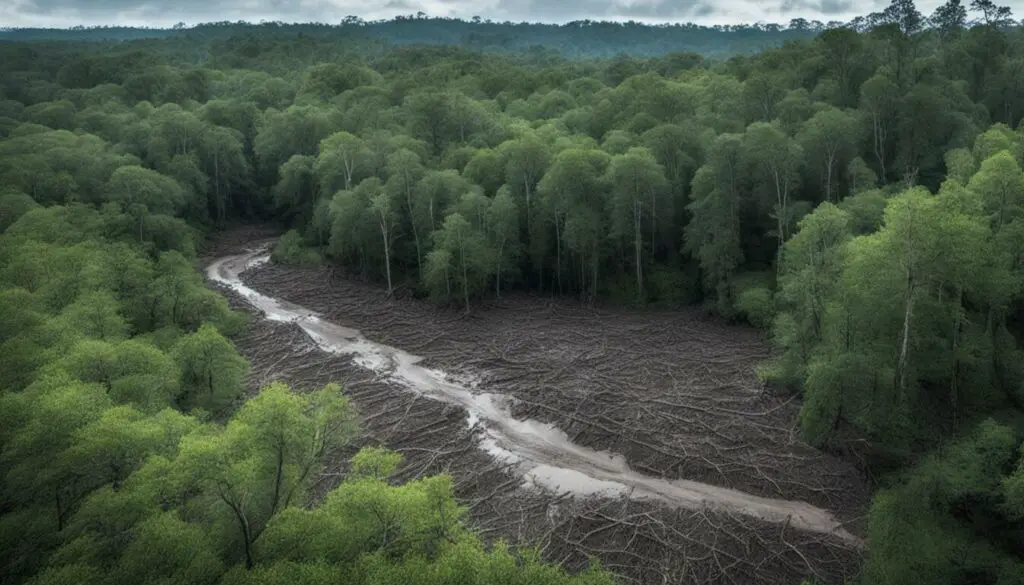
Common Habitats and Regions
The wild pig’s home in the US includes many different areas. They can be seen in:
- Dense forests that offer ample cover and foraging opportunities.
- Swamps and wetlands rich in aquatic vegetation.
- Mountainous areas that provide seclusion and a range of food sources.
These areas are important for wild pigs. They help them live and find food, which lets them move all over the country.
States with the Highest Populations
Some states in the US have a lot of wild pigs. Places like Texas, Florida, and California are known to have many. These states support a big part of the wild pig population in the country.
| State | Estimated Wild Pig Population |
|---|---|
| Texas | 2.6 million |
| Florida | 500,000 |
| California | 400,000 |
Texas leads with the most wild pigs, showing it’s a big habitat for them. Florida and California also have many, thanks to their warm weather and varied landscapes. These states stand out as key places for wild pigs in the US.
Hog Hunting Locations and Regulations
Many recreational hunters in the U.S. are attracted to hog hunting. This is because feral pigs are growing in numbers and are a big problem for the environment. To control these wild pigs, hunting them is allowed, but under certain rules.
Popular Hunting Areas
Top states for hog hunting include Texas, known for both private ranches and public lands. The Southeast U.S., especially Florida and Georgia, also attract hunters. It’s because there are many feral pigs there. In these parts of the country, you can hunt in many ways, from using dogs to hunting from helicopters.
Legal Guidelines for Hunting
It’s important to follow your state’s hunting laws. For instance, Texas allows hog hunting all year with no bag limits. In contrast, other places might need you to get a hunting license or follow a hunting season. Respecting these rules helps keep hunting ethical and the environment in balance by controlling the feral pig population.
| State | Key Regulations | Hunting Methods |
|---|---|---|
| Texas | No bag limits, year-round hunting | Ranch hunts, aerial hunting with helicopters |
| Florida | Licenses required, no closed season | Dog hunts, stand hunts |
| Georgia | License required, some restrictions | Stalk hunts, night hunting |
Efforts to Manage and Control Wild Pig Populations
It’s vital to deal with wild pig issues due to their negative effects on nature and farming in the U.S. Many methods are used to limit their impact.
Government Initiatives
Both the federal and state governments have set up programs for managing wild pigs. The USDA Wildlife Services is a prime example. They work hard to control feral pigs. Their actions include:
- Trapping and taking out whole groups to stop their numbers from growing.
- Using methods like aerial gunning and shooting on the ground to decrease their population.
- Providing resources to landowners to help them conserve wildlife.
Private Sector Involvement
Aside from the government, private groups also fight to manage wild pigs. Wildlife groups and private owners work together on plans. These schemes involve:
- Inventing new traps and using them to catch pigs.
- Using birth control for pigs to keep their populations under control.
- Working with hunters and hunting groups to control pig numbers through hunting.
Both the government and private groups are dedicated to fighting wild pig problems together. This approach makes for a better and lasting wildlife conservation plan.
| Initiatives | Strategies | Stakeholders |
|---|---|---|
| Government Programs | Trapping, Aerial Gunning, Ground Shooting | USDA Wildlife Services, State Agencies |
| Private Sector Involvement | Innovative Traps, Contraceptives, Regulated Hunting | Wildlife Conservation Groups, Private Landowners |
Health Risks and Concerns Related to Wild Pigs
Wild pigs are significant players in spreading diseases. They can infect livestock, wildlife, and people with a variety of illnesses. One major threat is swine fever, a disease that can cause big losses in pig farms. They also carry many parasites, which can jump to other animals and even to us.
It’s important to be aware of the ecological health risks wild pigs bring. Their digging and eating habits can harm nature, messing up local ecosystems. This increases the chance of diseases moving between different animals, including us. To protect our environment and health, it’s vital to manage and control wild pig populations.
A comparison of key diseases spread by wild pigs is eye-opening:
| Disease | Impact on Livestock | Impact on Humans |
|---|---|---|
| Swine Fever | High mortality rates, economic losses | Indirect impact through food safety |
| Brucellosis | Reproductive issues, decreased productivity | Fever, joint pain |
| Leptospirosis | Liver and kidney damage, abortion in livestock | Flu-like symptoms, potential for severe complications |
Their presence worsens the ecological health risks. Strict control is necessary. It includes keeping track of their numbers, using traps, and educating people. These actions help cut down the spread of diseases. They also protect both animal and human health.
Public Perception and Cultural Significance
People see feral swine in many different ways. Some find them annoying because they ruin things, while others love the challenge of hunting them. This back-and-forth feeling represents how Americans generally view wild pigs.
Wild pigs are important in American culture in unique ways. Hunters love them for the skills they need to catch them. But, to farmers and landowners, they’re unwanted guests that destroy crops. Seeing both sides helps us deal with the problems these pigs bring.
Finding a balance among the public about feral swine needs smart policies and everyone’s help. Some areas celebrate them in hunting customs, but others try to limit their effect. This divide shows how tricky it is to manage wild pig issues, needing careful and varied strategies.
| Aspect | Positive View | Negative View |
|---|---|---|
| Ecological Impact | Part of natural diversity | Disrupts local ecosystems |
| Economic Impact | Source of income for hunters | Costly agricultural damage |
| Cultural Views | Symbol of adaptability | Seen as invasive species |
The Future of Wild Pigs in the USA
The future of wild pigs in the USA is becoming a major concern. Their population is growing fast, which poses risks to our environment and economy. It’s important for everyone to stay informed and involved in finding solutions.
Wildlife conservation efforts need new plans to tackle this problem. This includes better trapping and raising public awareness. By working together, governments, landowners, and environmental groups can make a real difference. Understanding how important this work is helps protect our wildlife.
We all play a part in controlling the number of wild pigs. It requires teamwork to reduce the harm these animals can cause. This isn’t just a task for the government. It’s up to all of us to take action and help keep the balance in nature. By following these steps, we can ensure a better world for those to come.



